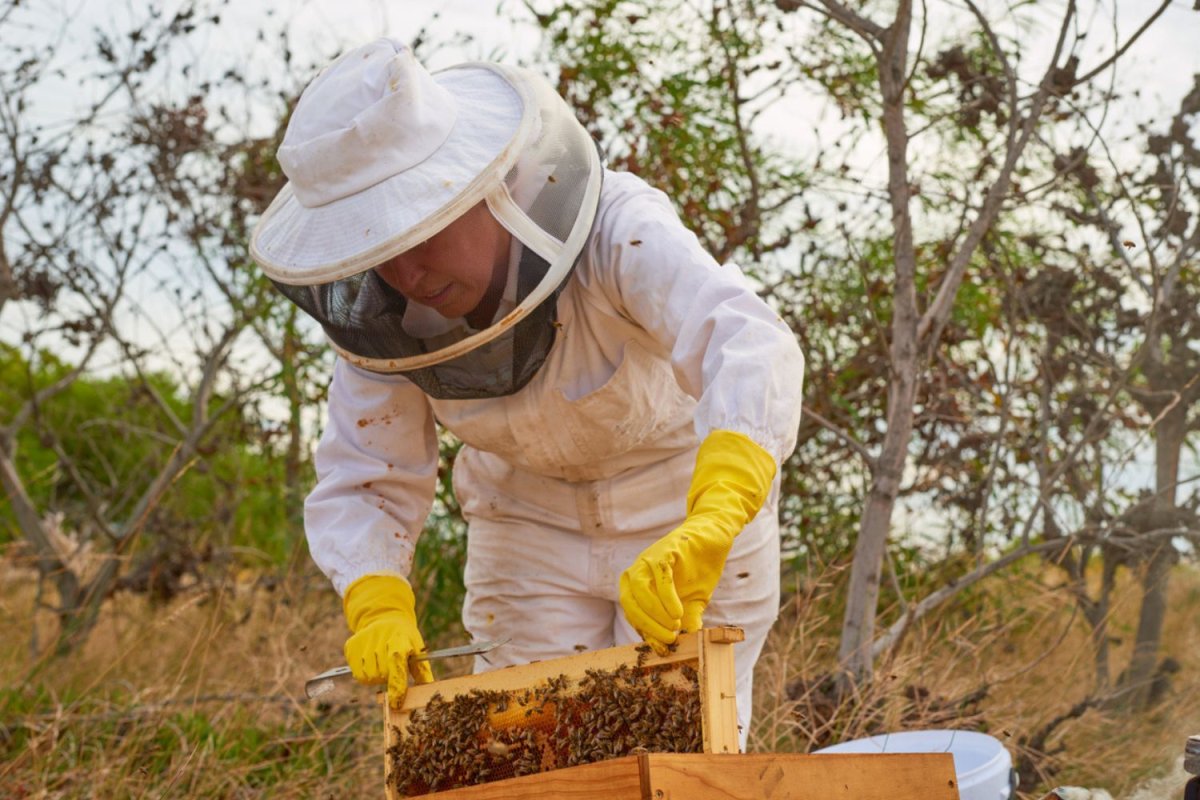We may earn revenue from the products available on this page and participate in affiliate programs. Learn More ›
Highlights
- The typical cost to remove bees is between $0 and $2,000, with a national average cost of $450.
- The main factors that affect bee removal cost include the location of the hive, the type of bee, the size of the hive, the inspection fee, and the home’s geographic location.
- Some of the main signs that bee removal is necessary include the presence of bee swarms or hives, insistent buzzing noises, and the presence of dark spots on walls or ceilings.
- Bee removal is a task that requires a professional to ensure that the bees are preserved while they are relocated to their new home.
Need bee removal? Get in touch with Ehrlich. As one of the best bee removal services in the industry, you can trust that Ehrlich professionals can provide solutions that protect you and your family—and the bees. Contact Ehlrich today.
When most people think of pests, they think of the icky invaders: rodents, roaches, bedbugs, and creepy-crawlies that cause shrieking when they’re spotted inside or near a home. Bees don’t immediately seem to fall into that category—but some bees can cause damage to wood structures, others can swarm and attack humans, and too many bees in high-traffic areas can cause a nuisance and endanger not only some humans but the bees themselves. If there’s a problem, it’s time for the homeowner to take action, but hosing down the hive with pesticide isn’t the right one. Beehive removal is a type of pest management just as termite extermination is, but the additional considerations make it a very different process.
Bees are essential; without them, there would be no flowers, no crops, no tidy vegetable patches in the backyard, and no honey. But many people are afraid of bees, sometimes with good cause. Ideally, people and bees can live side by side, but whether a large colony of angry bees has settled into the eaves, carpenter bees have attacked the siding, or bee honey is staining the house, sometimes bees need to be removed. Fortunately, bee removal cost is reasonably low, given the peace of mind that comes with knowing that a sting is less likely. According to Angi and HomeAdvisor, bee removal costs between $0 and $2,000, with a national average cost of $450.
In most cases, bee removal services will first try to relocate the bees. Bees are essential for pollination, and their numbers have dwindled in the last few years as a result of increased pesticide use and aggressive weed control measures. Protecting the bee population is critical to maintaining a balanced ecosystem and protecting national food sources. As a result, it’s preferable if at all possible to relocate bees rather than kill them. In some cases, local beekeepers will remove and adopt beehives and add them to a managed hive plan, protecting the bees and allowing the hive to grow safely and healthily. In other cases, a professional service will remove the hive and simply relocate it to public land, placing the hive in an area where it will be safe and have a natural food and water source to give the bees the best chance of survival. It’s important to note that bee removal and relocation are not the same as pest extermination. While some pest control companies like Ehrlich double as some best bee removal services by also specializing in safely removing bees from a property, it’s worth inquiring about removal methods.
Beehive removal can be free, if it’s a task the homeowner can take on themselves. In addition, sometimes a local beekeeper will offer their services at no cost, making the bees’ removal free. On the other hand, removal can cost up to $2,000 or more in cases of exceptionally large hives or aggressive bees. The cost depends on a number of factors, and understanding the components of the cost and the potential risks of trying a DIY removal can help make decisions about bee removal easier.
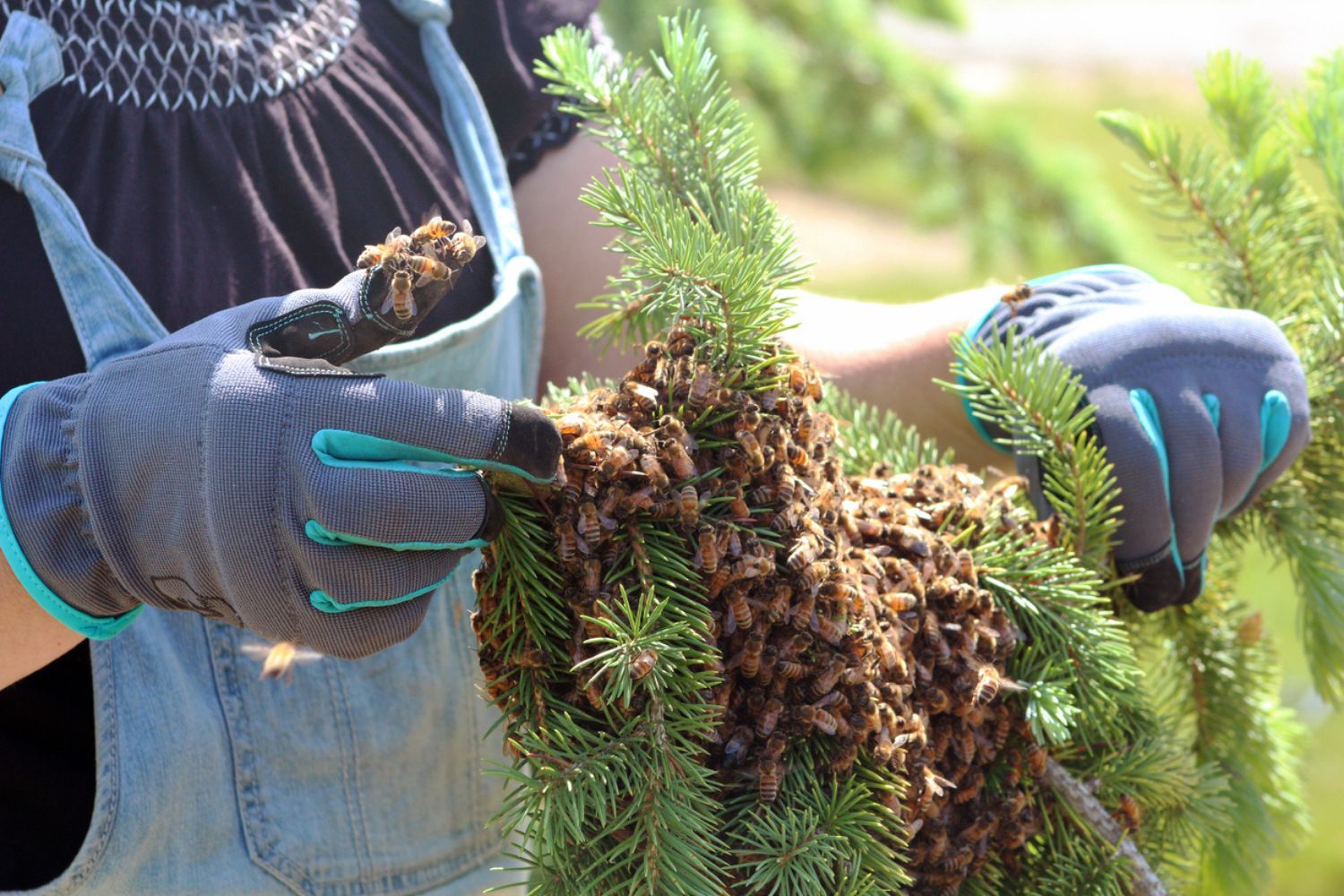
Factors in Calculating Bee Removal Cost
The process required to get rid of bees can be quite complex, and the complexity of the job is based on a number of factors. Assessing the situation should give homeowners an idea of how difficult the removal will be and whether or not calling a professional bee remover is a good idea.
Hive Location
Bees choose safe locations for their hives where they can attach securely and have easy access to food and water sources. Sometimes this means the hive is attached to the side of a tree where a professional can carefully remove the hive without damaging it and without using equipment to reach or access it. However, if the hive is attached to the house or is inside, the job becomes more difficult as the hive is harder to access—and bees do not want to be collected, so anywhere that is tightly enclosed increases the likelihood that the person removing them will be stung. Chimneys, roofs, attics, and basements are the most expensive locations for hive removal, costing up to $1,500. Bees located inside walls and ceilings are less expensive to remove, usually topping out around $750, and bees that are outside or in an outbuilding cost the least to remove. The following table shows the average cost of bee removal from several locations within a home.
| Hive Location | Removal Cost Range |
| Attic | $200 to $1,100 |
| Chimney | $200 to $1,500 |
| Roof | $200 to $1,100 |
| Tree | $200 to $650 |
| Wall or ceiling | $200 to $750 |
Bee Type
Not all bees are alike. Some are content to mind their own business and are unlikely to sting, while others will attack if a person enters a 20-foot radius. Some have hives that attach neatly to a wall and can be easily removed, while others dig deeply into the wood of a home, fence, or shed. Homeowners may think they know the differences between carpenter bees and bumblebees, but a professional can confirm the type of bee in question. Knowing the type of bee that has infested the space can help homeowners better estimate the removal cost, as the cost is based on both the ease of removal and the danger of doing so. This isn’t something most homeowners can do on their own, so even if the plan is a DIY removal, it’s best to consult a professional to ensure clear and correct information.
Hive Size
Some types of bees aren’t particularly social and live in small communities of 50 bees. Others live in massive hives of 80,000 or in a series of linked hives containing 20,000 bees apiece inside a wall. Smaller hives are simpler to remove; large hives can require significant equipment to cut into walls or siding and then remove multiple pieces of the hive, all while the bees are angry and swirling around. Safe transportation for relocation of large hives is also more difficult. A small hive can cost as little as $75 to relocate, while a massive one can cost between $2,000 and $2,500 and up.
Inspection Fee
Prior to actually removing bees, a reputable professional will come to the location and perform an inspection, then make recommendations based on the result. The cost for this inspection usually ranges from $150 to $250, but it’s well worth it: An inspection will reveal the type of bee that is present, the size of the hive, the expected extent of the removal process (especially if the hive is inside a wall or ceiling), and the approximate cost. Many bee removers will apply the cost of the inspection to the cost of the removal if they are hired, while others maintain the inspection as a separate fee.
Geographic Location
City residents will find that their bee removal costs are higher than the costs for those who live in the suburbs or the country. Most beekeepers, who are the likely adopters or transporters of relocated bees, live in areas where the space and availability of plants for the bees to pollinate are plentiful. Suburban and country residents will pay less because they’re closer to the pros who can remove the hives and closer to the areas where the hives will be relocated. City dwellers will pay more for the professional’s travel and the distance to the relocation spot. It’s also a bit more expensive to remove bees in areas that are warm for longer periods of the year, because the bees are dormant for a shorter time and the colonies can grow in size as a result.
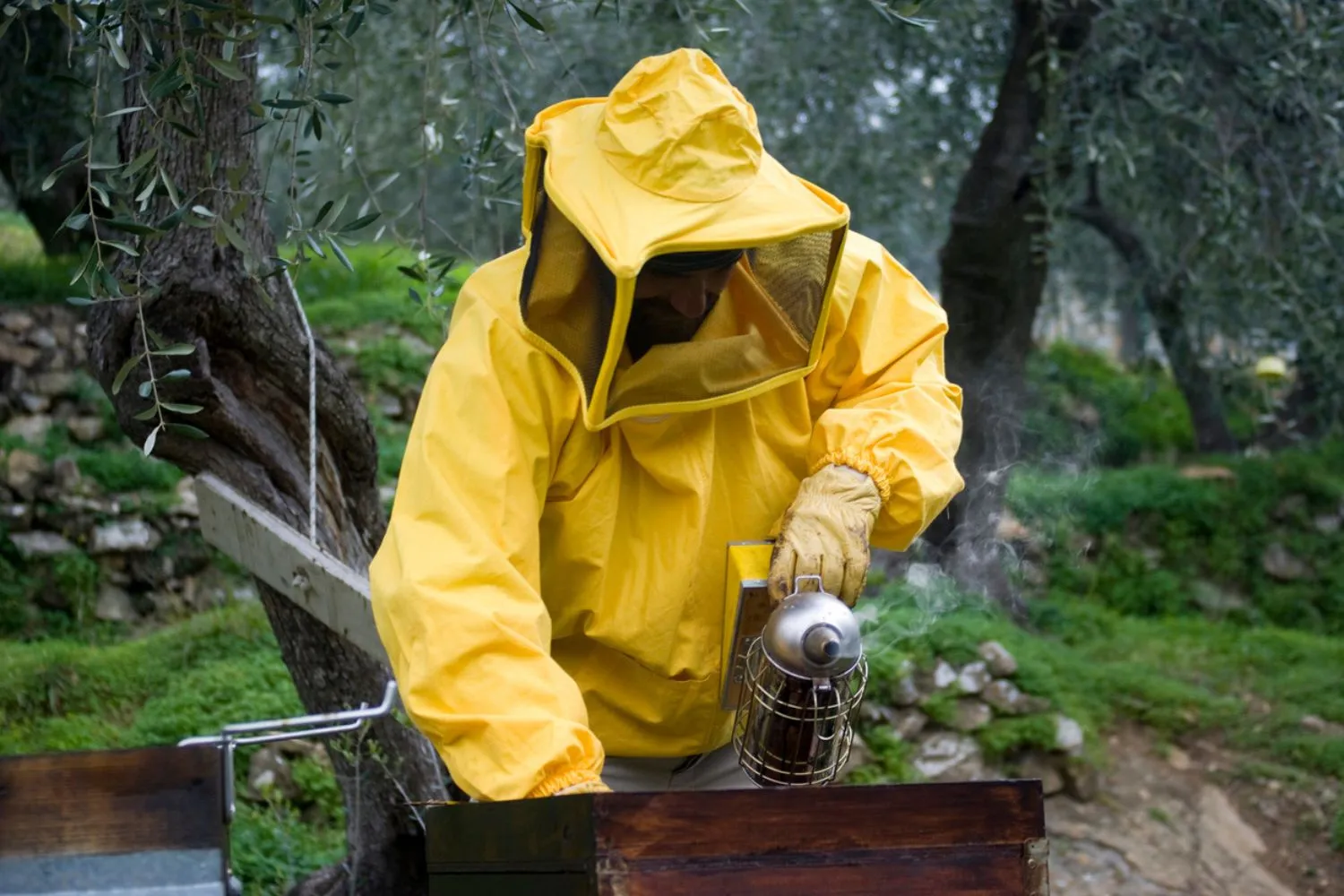
Additional Costs and Considerations
Removal of a hive can be as simple as containment and careful removal from a surface or as complex as the removal of ceilings and walls to try to find the extent of the colony. Hives that are more complex can add complication (and expense) to the removal process, so there are additional factors for homeowners to consider in those cases.
Relocation vs. Extermination
Extermination should be the last possible method of solving a bee problem. Bees are too important to the environment to kill just because they’re inconvenient, even if there’s a household member who is allergic: A qualified specialist can remove a beehive safely and completely and render the space secure for the allergic person to return to. The only real reason to opt for extermination is in cases where the infestation can’t be contained and removed or when the bees are extraordinarily aggressive. How critical is this choice? Consider this: Exterminating bees is much, much easier than removing and relocating a hive. A quick spray of pesticide, a little more to catch the stragglers, and the whole hive can be tossed in the trash. Relocation involves skilled work, some danger, and then the careful replacement of the hive in a safe location, plus a followup visit to remove any bees left behind that have been caught in a trap. And yet most professional bee specialists will offer a significant discount to customers who opt for removal over extermination. They will charge less money to do more work. Preserving the bee population is that important.
Swarm Removal
While the word “swarm” brings to mind a concerted attack, in this case, it’s really just referring to group travel. Swarming bees are on the move; they are a colony, often led by their queen, looking for a new home. Often they will stay in a yard only briefly as they continue their search, but once they’ve selected a new space, it’s best to remove and relocate them before they build a nest. They’re distracted and busy as they scout, so removal involves trapping them and relocating them, which is relatively simple and costs about $150.
Need bee removal? Get in touch with Ehrlich. As one of the best bee removal services in the industry, you can trust that Ehrlich professionals can provide solutions that protect you and your family—and the bees. Contact Ehlrich today.
Bee Damage Repair
Repair costs can vary significantly depending on what was damaged. Carpenter bee repairs can involve repairing or replacing decks, soffits, and siding, costing up to $2,500 for severe damage. Indoors, bees that have built nests inside walls and ceilings may require the removal of whole chunks of drywall and ceiling. The voids left behind will have to be cleaned effectively, especially if there were honey bees present, as honey left behind can attract other pests to the area. Then the drywall will need to be replaced and painted. The following table shows the cost range to repair bee damage around the home.
| Damage Location | Repair Cost Range |
| Ceiling | $300 to $1,000 |
| Deck | $250 to $2,500 |
| Drywall | $275 to $750 |
| Soffit | $6 to $20 per linear foot |
Emergency Callout Fees
If bees are discovered in a home where any resident is allergic, or if bees have swarmed the entrance points to the home, it’s considered an emergency. As with any emergency contractor call, the charges will be higher because of the urgent demand for services. This can add between $50 and $100 to the removal specialist’s cost, and if the bees are relocated to a beekeeper’s property, there may be an additional $40 to $75 extra to compensate the beekeeper for the unexpected services.
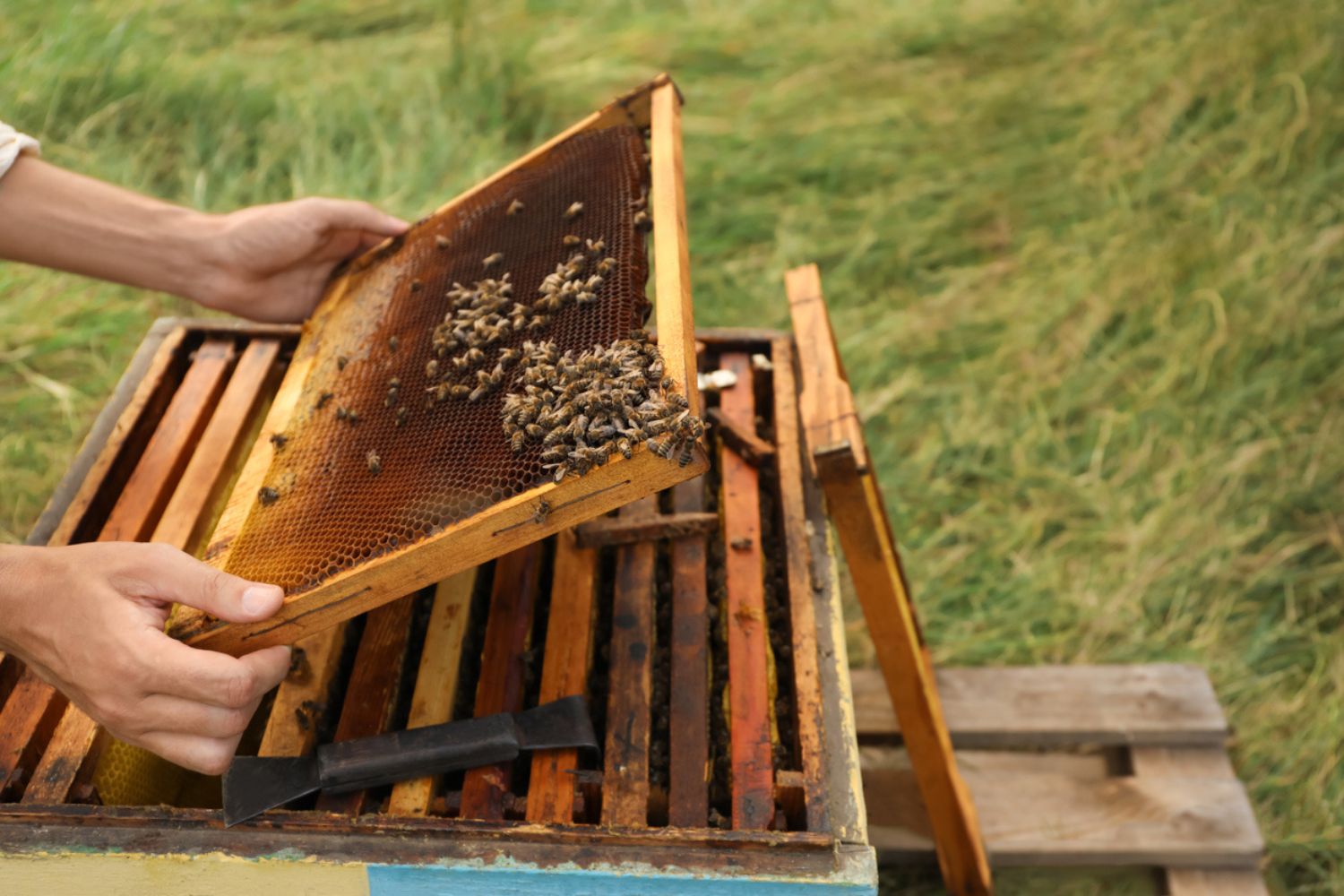
Bee Removal Cost by Type of Bee
Each type of bee provides its own challenges in a removal. Whether it’s the size or sturdiness of the hive or the aggression level of the bees, the type of bee directly affects the safety and cost of the removal process.
| Type of Bee | Average Removal Cost |
| Africanized honey bees | $100 to $1,000 |
| Bumblebees | $75 to $500 |
| Carpenter bees | $75 to $500 |
| Honey bees | $75 to $2,000 |
Africanized Honey Bees
Sometimes referred to as “killer bees,” Africanized honey bees are extremely aggressive and focused: They can chase threats for up to ¼ mile in defense of their homes, and if they catch up, they will attack as a group. When one of these bees stings, the stinger releases a scent that agitates other bees and encourages them to sting as well. Repeated stings can be fatal. Luckily, their colonies are usually fairly small, but they aren’t to be trifled with—Africanized honey bee removal is not a DIY project. If there’s any possibility that they may have infested a home or property, the homeowner will need to call a professional and can expect to pay between $100 and $1,000 for the removal.
Bumblebees
Bumblebees are more relaxed, mostly disinterested in people, and plump furry little guys who do a fantastic job of pollinating and very, very rarely sting. Their colonies are small and their benefits are great, so unless they’re actively bothering the home’s residents, a bee removal expert will often suggest that the hive be left in place. Because these bees are so critical to pollination and not great at defending themselves from predators, there are more guidelines protecting them than there are for other bee types, so homeowners will want to make certain that the professional removes and relocates the hive according to local ordinances. On average, the cost can be between $75 and $500.
Carpenter Bees
Carpenter bees make small hives and are easy to identify with their all-black color, and only females can sting (and they rarely choose to). What’s not to like? Carpenter bees got their name because they love wood, but rather than building things, they tunnel and burrow deep into any wood they can find: decks, attics, siding, framing, and really anything else they can reach. They need to be removed as quickly as possible before the damage becomes structural. The small colonies and their docile nature can make removal fairly easy, but it’s important not to delay. Removal will average between $75 and $500. For a very small infestation or in situations where carpenter bees are a recurring problem, a homeowner may want to look into purchasing one of the best carpenter bee traps or even into how to make a carpenter bee trap, to contain the bees and relocate them. Sometimes if the bees are deeply burrowed into the wood of the home, especially if they’re nested deeply in the framing and causing a structural problem, the last-resort option is to contact a carpenter bee exterminator.
Honey Bees
These are some of the most common bees in residential areas. Honey-bee hives are fascinating, containing thousands of cells in honeycombs that produce rivers of honey. Honey bees are not especially aggressive and can sting only one time, so they aren’t a huge threat unless the victim of the sting is allergic. The biggest challenge to honey bee removal is the size of the colony: These worker bees are very social and commonly live in colonies of 50,000 bees in a single nest. In addition, the honey can make the hive extremely sticky and messy to move. Even if they don’t sting, being swarmed by thousands of bees is not an ideal situation, so honey bees are some of the most expensive bees to relocate at a cost of $75 for a new, small hive to $2,000 for a larger, more established hive.
Need bee removal? Get in touch with Ehrlich. As one of the best bee removal services in the industry, you can trust that Ehrlich professionals can provide solutions that protect you and your family—and the bees. Contact Ehlrich today.
Do I Need Bee Removal?
A few bees in the backyard are normal in warmer weather. A lot of bees in the backyard are a nuisance. How does a person know when it’s time to consider bee removal? If there is someone in the home who is allergic to bees, the answer to this question is “as soon as the bees are present,” especially if there is more than one bee in the home. One could be a stray. More than one suggests a problem. There are also some telltale signs.
Buzzing Noises
A low hum or buzz that is fairly consistent inside the home calls for an investigation. It’s probably best in that case for the homeowner not to do too much investigation themselves and instead let a bee specialist come sound the walls. The professional will probably be able to gauge the extent of the problem before cutting into the walls, which will result in fewer bees flying freely around the house.
Bee Swarms
As the spring and summer bloom, bees swarm while looking for a new home. If there’s a large cloud of bees in the yard, or a swarm paying particular attention to an area of the house or a vent or soffit, homeowners will want to call in a pro as soon as possible. Swarms are easier and cheaper to remove than entrenched hives and deeply concealed nests.
Beehives
Spotting hives in high-traffic areas of the yard, under decks and porches, or in attic or basement windows means it’s time to consider removal, as these locations are likely to lead to bigger problems and make it more difficult for the bees and humans to share the space.
Dark Spots on Walls or Ceilings
These can be drips of honey or tiny holes left behind by carpenter bees. Any dark spots call for investigation anyway, because they could also be an indication of a plumbing or roof leak, but they’re often one of the first signs of an indoor bee infestation.
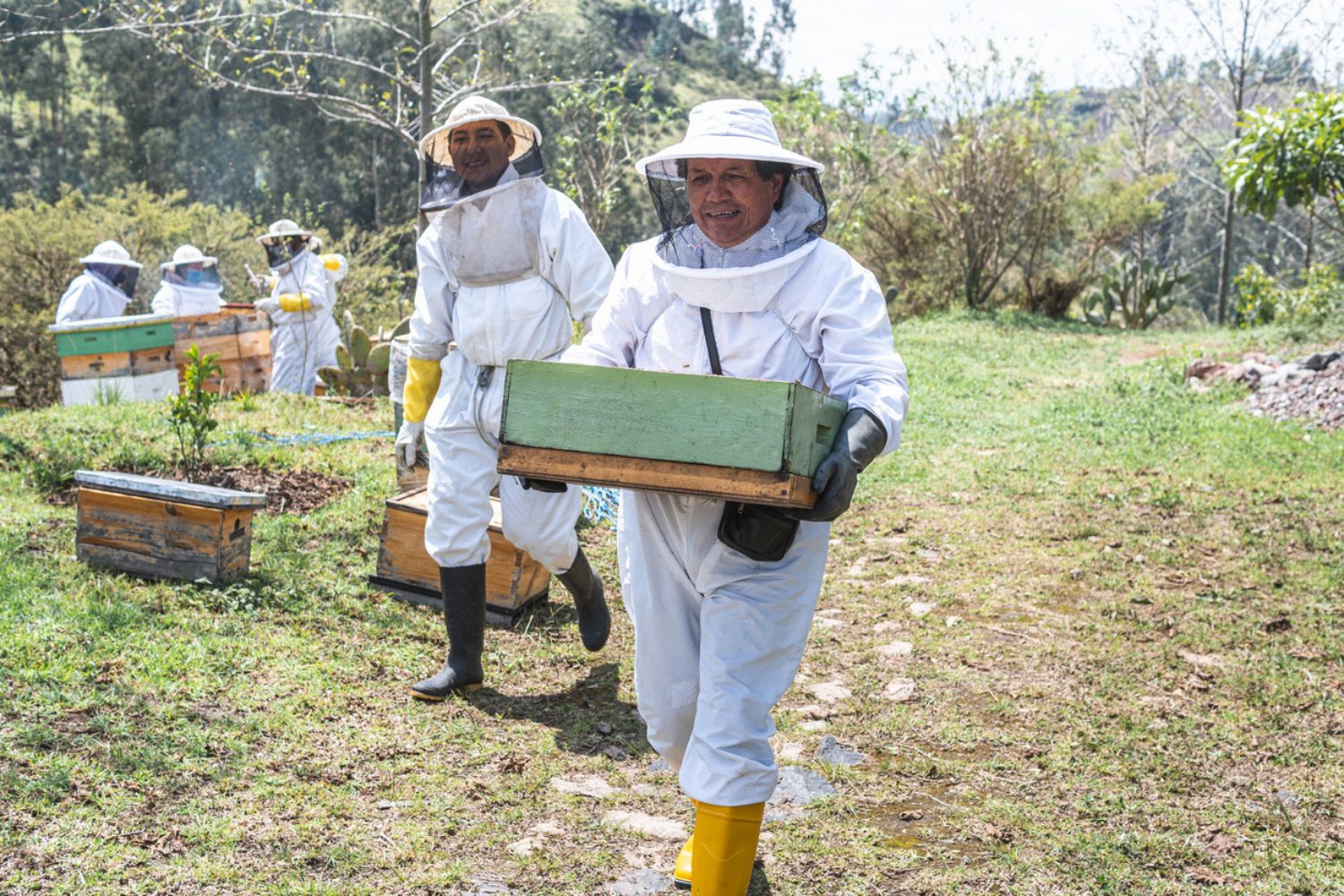
Bee Removal: DIY vs. Hiring a Professional
In almost all cases, bee removal requires assistance from an experienced professional who knows how to get rid of bees. It’s important to know exactly what kind of bee has infested the area before attempting a DIY removal, both for practicality and safety. After calling a pro to identify the type of bee, however, it’s usually best to just let the professionals do their work. The bees are more likely to survive and thrive in a new location where they are free to pollinate and make honey, and the homeowner will be bee-free while protecting a fragile but important part of the ecosystem. Large and involved hives are probably beyond most homeowners’ ability to deal with effectively, even if the homeowner is armed with a can of bee-killing spray. And if there are Africanized honey bees involved in the infestation, protective gear and specialized techniques are necessary to keep everyone safe.
Need bee removal? Get in touch with Ehrlich. As one of the best bee removal services in the industry, you can trust that Ehrlich professionals can provide solutions that protect you and your family—and the bees. Contact Ehlrich today.
How to Save Money on Bee Removal Cost
There aren’t a lot of variables that are within the homeowners’ control in a bee removal situation. If the bees are present and need to be removed, there’s only so much that can be planned ahead: Nobody budgets for bee removal unless there’s a consistent problem, and waiting for a less-expensive removal season isn’t an option if the bees need to go right away. Acting quickly and thoughtfully, however, can save a bit.
- Act quickly. Call a professional sooner rather than later. Small, less-established colonies are cheaper to remove, and swarms are even less expensive because there’s often no nest.
- Find a local beekeeper. Rather than calling a bee pest control company, consider contacting a local beekeepers association or a bee rescue group that can direct you to local beekeepers. The beekeepers may remove the hive for free or at a greatly reduced cost as thanks for saving the bees instead of killing them.
- Shop around. Seek inspections from several providers. This will mean there are several estimates to compare, but especially in cases where the bees are inside walls or ceilings, comparing inspections may help truly establish the extent of the infestation.
- Take preventative steps. After the bees are removed (or before they’re present!), carefully seal all cracks in the home’s exterior, and choose natural deterrents (such as neem, mint, citronella, eucalyptus, and cloves) to make the home less attractive to bees.
Questions to Ask About Bee Removal
The first question a homeowner will want to ask bee removal professionals is whether they provide removal services or only extermination. If the answer is that the provider offers only extermination, the homeowner will want to call another provider. The importance of saving the bees is more important than the inconvenience of scheduling a second inspection. Also, in most cases, bee removal specialists do not have to be licensed unless they are exterminating the bees, so licensing is not the concern it is when hiring other contractors. However, in some states, bee specialists must be licensed to deal with Africanized honey bees. If that kind of bee is present, homeowners will need to check to see if their state requires a license and ask the contractors if they are appropriately licensed. After that, there are other questions a homeowner will want to ask before hiring someone.
- Are you and all of your workers insured?
- Are you and your workers trained specifically to work with bees?
- Where are the bees relocated?
- Can you provide information about the beekeeper who will receive and care for the bees?
- Will you remove all of the honey after the bee nest removal?
- May we keep the honey?
- Will you also handle wasps or hornets if that’s actually what I have?
- Will the bees return after the removal, and if so, who should I call?
- How long will the removal take?
- How long have you been in business?
- Can you provide references?
FAQs
Bees are very beneficial to the environment, but if they set up camp in the wrong place or if there’s someone in the home who is allergic to them, they must be removed. The following are some of the questions homeowners often ask about bee removal that address common concerns. If the project is managed carefully, both the bees and the property owner can rest easily after the removal and relocation.
Q. Do bees come back after hive removal?
Their keen sense of smell may guide bees back to the site of their former hive, even if the area has been cleaned. If the hive is removed correctly—taken either early in the morning or late in the evening—then most of the bees will be in the hive at the time of the removal. There may be some stragglers left behind, so a smart bee removal specialist will leave a special collection box at the site that is baited to lure the bees in and capture them so they can be relocated with the hive. If this doesn’t happen, the left-behind bees will either die fairly quickly, or if there are enough of them, they may try to form a queenless colony. They may survive for a time but will also eventually die.
Q. Are there laws against killing bees?
In some states, there are laws against killing bees that are in managed hives or bees whose hives are not on a homeowner’s property. Many areas have regulations against using certain kinds of pesticides to kill bees because of the potential for collateral damage to other bees and the environment. It’s best for homeowners to check local and state ordinances or check with a professional who is familiar with current rules before attempting to kill bees.
Q. What month are bees least active?
While most people tend to get sleepy and low-energy when it’s warm, bees draw their energy from warm weather and the sun and become lethargic and slow when the temperature cools to lower than 50 to 55 degrees. That happens at different points in the year depending on the geographic region, but in general bees have disappeared by late September and remain dormant through early March.
Q. What are the risks of using pesticides to remove bees?
Bees are critical to the ecosystem. Pesticides can kill bees in several ways—directly, through contamination of their food sources, and through contamination of their hives. If whole hives of bees are killed, the area around the hive won’t be pollinated effectively, reducing the number of flowers and plants in the area, which in turn reduces food sources for other animals. Contamination creates two separate problems: The honey produced by the hives will also be contaminated and could cause illness among people who eat it, and the pesticide in the hive can damage or kill other bees. Plants need bees to pollinate and grow properly, so killing the bees with pesticides sprayed on flying bees, hives, nests, and nearby flowers has a ripple effect and damages a whole chain of plants and animals.
Q. Does homeowners insurance cover bee removal?
Most homeowners insurance policies have exclusions for pest control and removal, so it’s not particularly likely that they’ll pay for bee removal. Some home warranties have extra riders that customers can place on their policies that cover insect removal, which isn’t a bad idea if someone in the home is severely allergic to bees. However, not all policies include this option.
Q. What happens when a queen bee is removed from a hive?
A queen bee that has died or been removed will be replaced by the worker bees. When the queen is in place, she emits a pheromone that renders all of the other female bees sterile, so that only she can produce eggs and larvae. When the queen is gone, the absence of the pheromone allows some of the females in the hive to become fertile and produce eggs that become larvae. The same absence triggers worker bees to build queen-size cells in the hive. A number of female larvae are placed into the hive and are fed a special food called “royal jelly,” which allows them to develop as fertile bees instead of sterile worker bees; after killing her competition while they’re still larvae, the first one to emerge becomes the new queen. It’s pretty brutal, but it maintains the organization and continuity of the hive.
Sources: Angi, HomeAdvisor, Fixr

